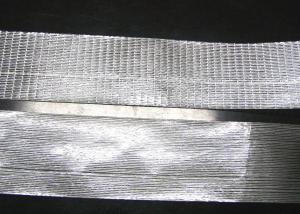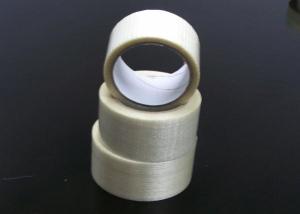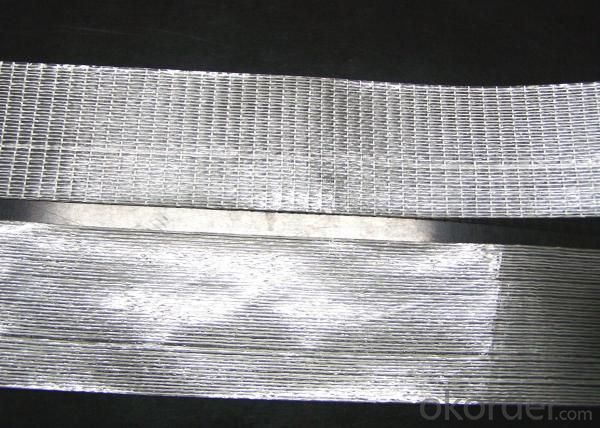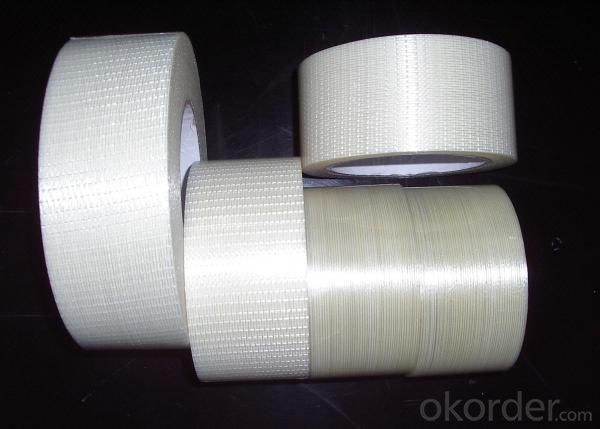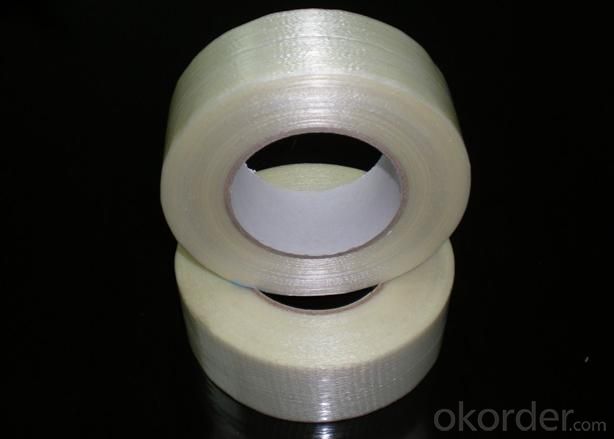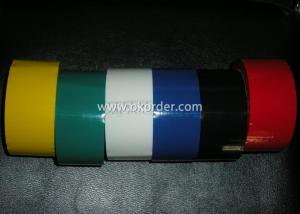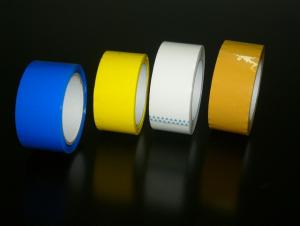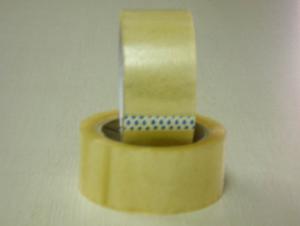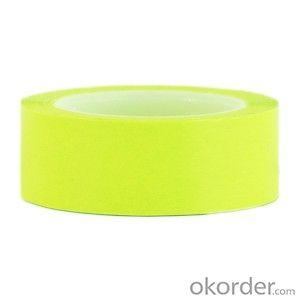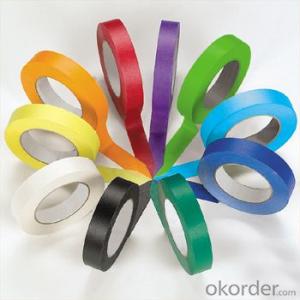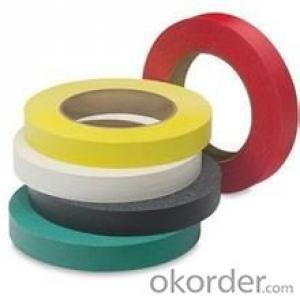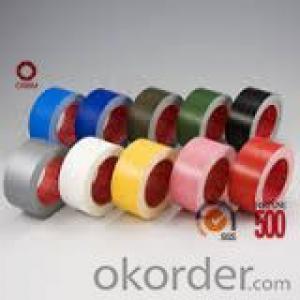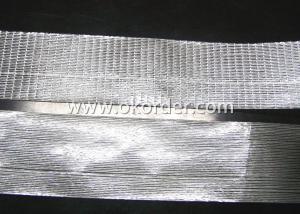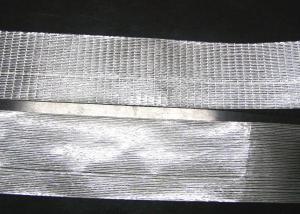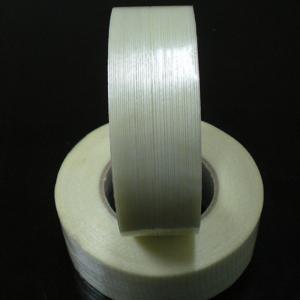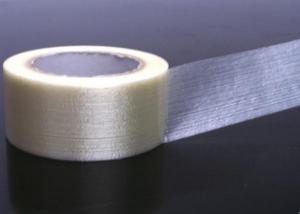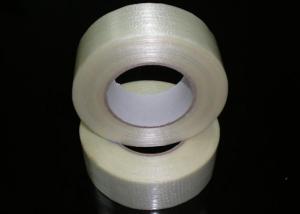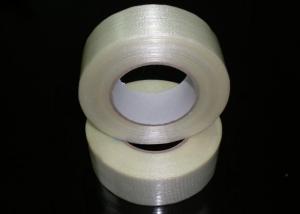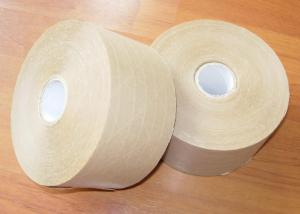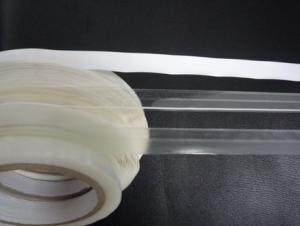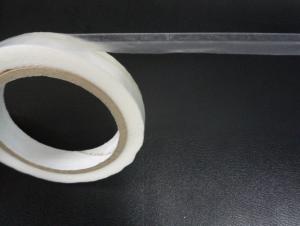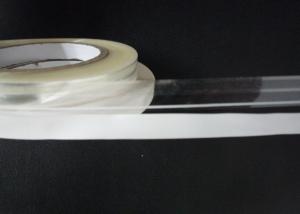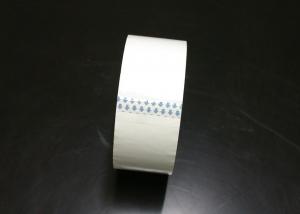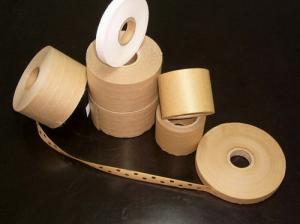Best Sale Fiberglass Tape FGT-160 with Packaging Tape Printing
- Loading Port:
- China Main Port
- Payment Terms:
- TT or L/C
- Min Order Qty:
- USD3000 roll
- Supply Capability:
- 30 Days For 1x20' FCL roll/month
OKorder Service Pledge
OKorder Financial Service
You Might Also Like
Specifications Of Best Sale Fiberglass Tape FGT-160:
No one can deny that fiberglass tape has uses far beyond covering up the joints in wallboard. Composed of twisted strands of fiberglass woven at right angles to one another, its resistance to high temperatures makes it ideal for wrapping electrical cable. It is also the tape of choice for the aficionados of homemade rockets, who use it to secure the centering rings to the main tube, and has evolved into a fixture in hospitals and doctors' offices, especially for use on casts and bandages.
Sold in a number of widths, fiberglass tape is generally easier to use than its paper counterpart. With the adhesive side down, its flexibility lends itself to molding to the shape of what it is covering or securing. It also has woven edges to prevent unraveling. Some fiberglasstape has been coated with various types of liquid polymers or plastics, and one American company has even devised a method of impregnating it with a form of rubber.
The tensile strength of fiberglass tape makes it tough enough for use on irrigation lines, pipelines and sewer lines. The advantage in that scenario is that it doesn't rot when exposed to constant moisture. The coated type is especially impervious to the elements.
CONSTRUCTION Of Best Sale Fiberglass Tape FGT-160:
Backing: Bi-directional Fiberglass + PET film
Adhesive: Hot melt rubber based adhesive
TYPICAL PHYSICAL PROPERTIES Of Best Sale Fiberglass Tape FGT-160:
Total Thickness (adhesives + backing): 160micron
Initial Tack: more than 18# steel ball
Tensile Strength: more than 190N/25mm
Peel Adhesion: 16.5 N/25mm
Holding power: not less than 50h (1kg/25mm)
Mesh: 20/6
Temperature resistance: 60C
Elongation: 1.00%
Sizes Of Best Sale Fiberglass Tape FGT-160:
Jumbo Roll: 1.02 x 1000m
Cut Roll: As per customer's requirements
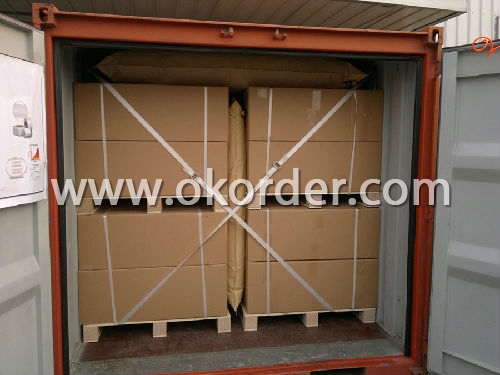
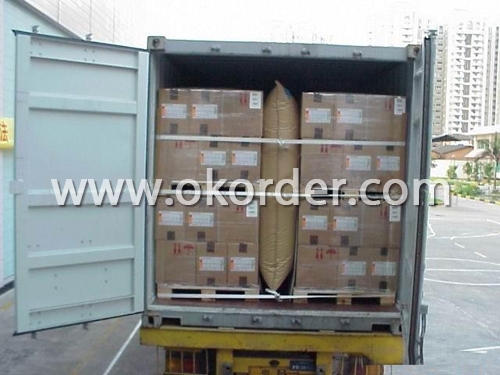
- Q: How much weight can packaging tape hold?
- The weight that packaging tape can hold depends on various factors such as the type and quality of the tape, the surface it is applied to, and how it is used. Generally, packaging tapes can typically hold up to 20-30 pounds of weight, but it is always recommended to check the specific guidelines provided by the manufacturer for optimal usage.
- Q: Can packaging tape be used for sealing paper bags?
- Yes, packaging tape can be used for sealing paper bags. Packaging tape is designed to have strong adhesive properties that bond well with various surfaces, including paper. When applied properly, packaging tape can provide a secure and reliable seal for paper bags, keeping the contents inside protected and preventing them from falling out or being exposed to external elements. It is important to ensure that the surface of the paper bag is clean and dry before applying the tape for optimal adhesion.
- Q: Can packaging tape be used on different materials?
- Yes, packaging tape can generally be used on different materials. It is commonly used to seal cardboard boxes, but it can also adhere to materials such as plastic, metal, and wood. The adhesive on packaging tape is designed to provide strong adhesion on a variety of surfaces, making it versatile for different packaging needs.
- Q: What are the benefits of using high-tack packaging tape?
- There are several benefits of using high-tack packaging tape. Firstly, high-tack tape has a stronger adhesive compared to regular packaging tape, ensuring that the tape sticks firmly to the surface it is applied to. This provides a secure and reliable seal for packages, preventing them from opening or getting damaged during transit. Secondly, high-tack tape is designed to withstand various environmental conditions, including extreme temperatures, humidity, and moisture. This makes it suitable for packaging items that may be exposed to harsh conditions during shipping or storage. The tape remains intact and does not lose its adhesion, ensuring the package remains sealed and protected. Additionally, high-tack packaging tape is often thicker and more durable than regular tape, providing extra strength and resistance to tearing or puncturing. This added durability is especially beneficial when shipping heavy or bulky items that require a stronger tape to hold them securely. Furthermore, high-tack tape is typically easy to use and dispense, making the packaging process more efficient. It often comes with a dispenser or is available in easy-to-use formats, such as rolls or strips, reducing the time and effort required to seal packages. Lastly, high-tack packaging tape can enhance the professional appearance of packages. It often comes in clear or transparent options, allowing any logos or labels on the package to remain visible. This can be particularly advantageous for businesses that want to showcase their branding or ensure that important information is easily readable. In conclusion, the benefits of using high-tack packaging tape include superior adhesion, resistance to environmental conditions, durability, ease of use, and a professional appearance. These advantages make it an ideal choice for securing packages and ensuring their safe and secure delivery.
- Q: Does packaging tape come in different colors?
- Packaging tape indeed comes in various colors. Although clear is the most commonly used color, there is a wide range of colors to choose from to cater to different requirements and personal preferences. For instance, red, blue, green, yellow, and black are some examples of colored packaging tape. These colored tapes serve multiple purposes, such as color-coding packages, indicating priority shipments, or adding a vibrant touch to your packaging. Moreover, colored packaging tape offers versatility as it can be used for decorative or artistic intentions, making it a suitable choice for both practical and creative uses.
- Q: How does packaging tape perform when exposed to chemicals or solvents?
- Packaging tape generally performs well when exposed to chemicals or solvents, but the specific performance may vary depending on the type of tape and the nature of the chemicals or solvents involved. Most packaging tapes are designed to have good resistance to common household chemicals such as cleaning agents, oils, and water-based solvents. They are typically made from materials like polypropylene or PVC, which have excellent chemical resistance properties. This allows the tape to maintain its adhesion and integrity even when exposed to moderate amounts of chemicals or solvents. However, it is important to note that some aggressive chemicals or solvents, such as strong acids or organic solvents, may have a detrimental effect on the performance of packaging tape. These highly corrosive substances can cause the tape to degrade, lose its adhesive properties, or even dissolve completely. To ensure optimal performance, it is recommended to check the specific chemical resistance properties provided by the manufacturer of the packaging tape. They may offer guidance on the suitability of the tape for different types of chemicals or solvents. Additionally, it is advisable to conduct small-scale tests or trials to assess the tape's performance when exposed to specific chemicals or solvents before using it for critical packaging applications. In summary, packaging tape generally performs well when exposed to common household chemicals or solvents. However, its performance may be compromised when exposed to aggressive or corrosive substances. It is important to consult the manufacturer's guidelines and conduct tests, if necessary, to ensure that the tape is suitable for the specific chemical or solvent it will be exposed to.
- Q: How wide is standard packaging tape?
- Standard packaging tape is typically 2 inches wide.
- Q: How do I prevent packaging tape from leaving a sticky residue?
- There are several simple steps you can take to ensure that packaging tape does not leave behind any sticky residue. Firstly, it is important to choose the appropriate type of tape. Look for high-quality packaging tape that is specifically designed to leave minimal residue. Tapes with a low-tack adhesive or those labeled as residue-free are ideal. Before applying the tape, make sure the surface is clean and dry. Use a mild detergent or rubbing alcohol solution to wipe away any dust, dirt, or grease. This will improve the tape's adhesion and minimize the chances of residue formation. If you are unsure about the tape's residue potential, it is always a good idea to test it in a small, inconspicuous area first. Apply a small piece of tape and let it sit for a few hours or overnight. After removing it, check for any sticky residue. If none is present, you can proceed with confidence. When removing the tape, do so slowly and at a low angle parallel to the surface. Pulling it too quickly or at a high angle can increase the likelihood of leaving behind sticky residue. Take your time and be patient to avoid any damage or residue. If some residue remains, you can try using gentle heat or solvents to remove it. Use a hairdryer on a low setting to warm up the residue and then wipe it away with a clean cloth. Alternatively, you can apply a small amount of rubbing alcohol, white vinegar, or adhesive remover to a cloth and gently rub the residue until it dissolves. By following these tips, you can effectively prevent packaging tape from leaving a sticky residue and maintain a clean surface.
- Q: What are the different types of packaging tape available?
- There are several different types of packaging tape available, each designed for specific purposes and applications. Here are some common types: 1. Clear packaging tape: This is the most commonly used type of packaging tape. It is transparent and provides a strong adhesive bond for sealing boxes and packages. Clear tape is versatile and suitable for a wide range of applications. 2. Brown packaging tape: Also known as "brown tape" or "packing tape," this type of tape is made from brown or tan-colored material, usually reinforced with fiberglass. It offers excellent strength and durability for securing heavy or bulky packages. 3. Masking tape: While not specifically designed for packaging, masking tape can be used for light-duty sealing or labeling purposes. It is easily removable and leaves no residue, making it ideal for temporary applications. 4. Duct tape: Often recognized for its strength and versatility, duct tape is not primarily designed for packaging but can be used in certain situations. It has a strong adhesive bond and is known for its ability to stick to a wide range of surfaces, including uneven or rough ones. 5. Filament tape: This type of tape is reinforced with fiberglass filaments, providing exceptional strength and resistance. Filament tape is commonly used for bundling or reinforcing heavy or irregularly shaped items. 6. Double-sided tape: Unlike other types of packaging tape, double-sided tape has adhesive on both sides and is used for various applications, such as bonding two surfaces together or mounting objects. 7. Kraft paper tape: Made from a renewable resource, kraft paper tape is an eco-friendly alternative to plastic tapes. It is water-activated and requires moistening before application. Kraft paper tape provides a strong seal and is often used for sealing cartons or packages containing valuable or fragile items. 8. Colored packaging tape: This type of tape is available in various colors and is commonly used for color-coding packages, labeling, or adding aesthetic appeal to packages. These are just some of the different types of packaging tape available in the market. Each type has its own unique characteristics and is suitable for specific packaging needs. When choosing the appropriate tape, it is important to consider factors such as the weight and nature of the package, the environment it will be exposed to, and any specific requirements or regulations that may apply.
- Q: Can packaging tape be used for sealing packages with perishable items?
- Using packaging tape to seal packages with perishable items is not recommended. Although it may create a temporary seal, it is not intended to withstand the specific difficulties that accompany packaging perishable goods. Items that can spoil, such as food or flowers, necessitate specialized packaging materials that offer insulation, temperature control, and protection against moisture or air leakage. These materials are purposely designed to safeguard perishable items throughout transportation and storage. Consequently, it is advisable to utilize suitable packaging materials like insulated bags, coolers, or specialized packaging solutions to seal packages containing perishable items, guaranteeing their freshness and quality.
1. Manufacturer Overview
| Location | Guangdong, China |
| Year Established | 2010 |
| Annual Output Value | Above US$ 5 Million |
| Main Markets | Southeast Asia; South America; Eastern Europe; North America; Northern Europe; South Asia; Western Europe; Africa; Mid East |
| Company Certifications |
2. Manufacturer Certificates
| a) Certification Name | |
| Range | |
| Reference | |
| Validity Period |
3. Manufacturer Capability
| a) Trade Capacity | |
| Nearest Port | Shenzhen |
| Export Percentage | 10%-20% |
| No.of Employees in Trade Department | 51-100 People |
| Language Spoken: | English; Chinese |
| b) Factory Information | |
| Factory Size: | Above 10000 square meters |
| No. of Production Lines | Above 10 |
| Contract Manufacturing | masking tape, cloth tape, PET tape |
| Product Price Range | Average |
Send your message to us
Best Sale Fiberglass Tape FGT-160 with Packaging Tape Printing
- Loading Port:
- China Main Port
- Payment Terms:
- TT or L/C
- Min Order Qty:
- USD3000 roll
- Supply Capability:
- 30 Days For 1x20' FCL roll/month
OKorder Service Pledge
OKorder Financial Service
Similar products
Hot products
Hot Searches
Related keywords
